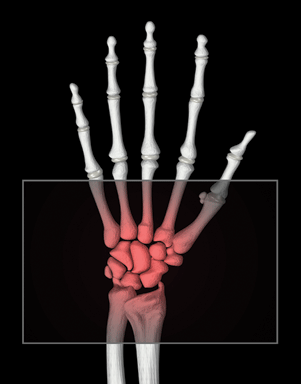


Archive
Advertisers Index
Products & Services
Job Opportunities
Media Kit - PDF
HTAA Sign-up!
Online Classifieds
Receive extra copies!
Driver HEALTH
800-878-0311 x2111
Features
On the road to health
John Kelly, M.D.
Colon Health
Frequent screening and early detection
Healthy Trucking
Digging graves with silverware
Health Tips
Running on Empty
Carpal Tunnel Syndrome
hand numbness and pain
Smartway Partners
maximize freight efficiencies
Departments
Publisher's Desk
Here's to health and wellness
Roadside Dietitian
2 things about weight loss
Industry Update
Best Fleets to Drive For
Murphy's World
Rookie driver gets that sinking feeling
Driven Women
Smoked out
Say What?
How do you stay healhty on the road?
Yoga on the Road
ANYONE can do it!
Joseph Yao, M.D.
 Many professional drivers suffer from hand numbness and pain. A Qwi survey of 740 truck drivers found 59 percent of drivers had hand pain and 71 percent had hand numbness while driving. Gripping the steering wheel transfers pressure and vibration to the median nerve in the hand, potentially causing carpal tunnel syndrome (CTS). CTS is not only painful, but it results in time lost from work and significant medical expense (an estimated $8,763 for a case requiring surgery).
Many professional drivers suffer from hand numbness and pain. A Qwi survey of 740 truck drivers found 59 percent of drivers had hand pain and 71 percent had hand numbness while driving. Gripping the steering wheel transfers pressure and vibration to the median nerve in the hand, potentially causing carpal tunnel syndrome (CTS). CTS is not only painful, but it results in time lost from work and significant medical expense (an estimated $8,763 for a case requiring surgery).
Classical CTS symptoms include pain, numbness and tingling involving the thumb, index, long fingers and half of the ring finger. The small finger side of the hand is supplied by another nerve (the ulnar nerve). Pain may shoot up to the shoulder. Pain and numbness is often worse at night, making sleep difficult. Hanging the hand off the edge of the bed or shaking the hand may provide relief. There may be grip weakness and the muscles at the base of the thumb may shrink (thenar atrophy).
Simple physical exam tests can help diagnose CTS. Nerve conduction tests use an electrical stimulus in the forearm above the carpal tunnel. The magnitude and location of the conduction slowing determines the severity and site of nerve injury. Symptom relief after car-pal tunnel steroid injection also helps confirm the diagnosis of CTS.
Initial treatment for CTS includes the use of a wrist splint and activity modification. Proper ergonomics and special exercises can help prevent CTS in professional drivers. Treatment of associated medical problems such as diabetes and hypothyroidism may help relieve CTS symptoms. Nonsteroidal anti-inflammatory medications (NSAIDs) and carpal tunnel steroid injections are often effective.
Carpal tunnel release surgery can be done when nonsurgical measures are unsuccessful. Surgery takes pressure off of the median nerve by releasing the transverse carpal ligament, which forms the roof of the carpal tunnel. Surgery takes about 20 minutes and is done on an outpatient basis. There may be residual symptoms when treatment is delayed since some degree of permanent nerve damage may have occurred by the time of surgery. Surgery is beneficial even in these delayed cases because decompression of the median nerve helps prevent additional pressure-related nerve injury and gives the nerve a chance to heal.
Surgery eliminates intrinsic pressure (i.e., pressure inside the hand) on the median nerve caused by the overlying ligament since the ligament is cut at surgery. Surgery does not, however, prevent injury to the median nerve from extrinsic (i.e., pressure on the outside of the hand) pressure caused by gripping. Successful treatment depends upon prompt diagnosis and early treatment to avoid permanent median nerve damage.
Source: qwinerveprotector.com
© Copyright,
Ramp Media Group, 2010